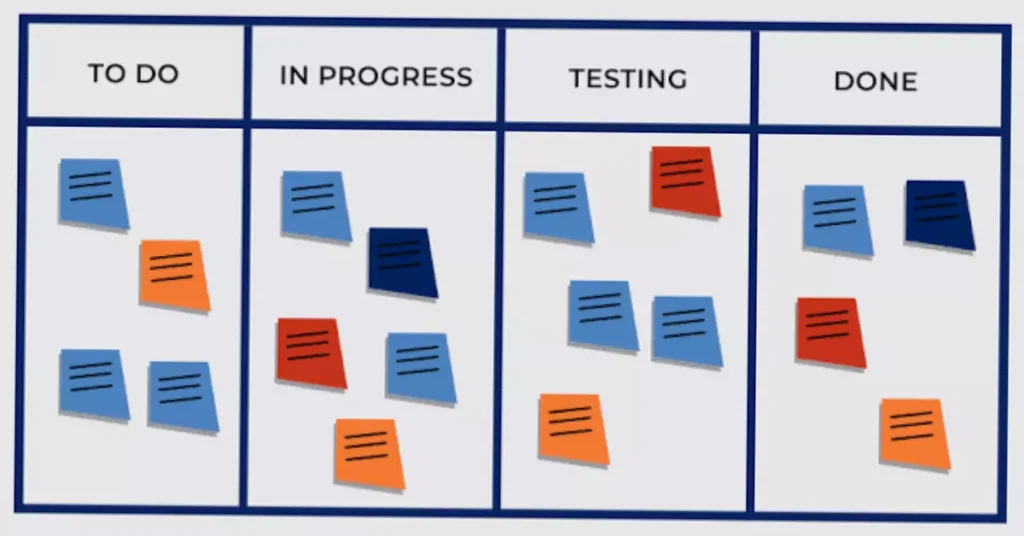In today’s fast-paced world, it often feels like peace has disappeared from our lives. In this article ‘The Pursuit of a Happy Life: 18 Japanese Wisdom and Techniques‘, we will discuss 18 Japanese concepts, techniques, and terms that can make your life better. By adopting these Japanese concepts, you can bring positive changes, and they can assist you in finding more happiness, growth, discipline, and other essential aspects in your life.
1. Wabi-sabi (finding beauty in imperfections)
“Wabi-sabi” is a Japanese concept that can add a lot of positivity to the way we live our lives. This concept means finding beauty in imperfection, impermanence, and simplicity, and wholeheartedly accepting natural things like growth and decay.
2. Ikigai (sense of purpose)
To live a peaceful life, you should definitely embrace this Japanese concept, which means that if you integrate your passion, mission, vocation, and profession, you will feel a much greater sense of purpose and peace in your life.
The logic behind this concept is quite simple. If you do work that you enjoy, excel at, that the world also needs, and that can provide you with income, then when all these elements come together, your life becomes much easier and more enjoyable.
3. Omoiyari (sympathy and empathy for others)
In today’s fast-paced and busy life, it often feels like we don’t have time for others. We seem to have forgotten how to care about others’ feelings, and this is where the concept of “Omoiyari” comes into play, teaching us to be empathetic and compassionate towards others. This Japanese concept places a special emphasis on paying attention to the needs and feelings of others.
Omoiyari teaches us to feel kindness and mindfulness towards others.
4. Kaizen (continuous improvement)
If you want to achieve success in your life, you will need to continuously improve yourself. This is precisely what Kaizen means, which is about making small and incremental changes in your life or any aspect of it. Over time, these small changes will bring significant positive improvements.
Kaizen teaches us the importance of consistently working towards making something better.
5. Shinrin-yoku (forest bathing)
Many times, we fail to understand the power of nature, and this Japanese term enlightens us about the therapeutic benefits of nature. “Shinrin-yoku” means that by simply taking a leisurely walk in the forest, we can enhance our physical and mental well-being.

Shinrin-yoku emphasizes the advantages of the natural environment, helping us reduce our stress levels and increase relaxation and happiness.
6. Pomodoro technique (a time management method)
You might have heard about this Japanese time management concept, which means that you should work on a task for 25 minutes and then take a 5-minute break. Doing this can make you more productive, and you’ll also get periodic rest in between.

7. Kakeibo (method of budgeting)
Kakeibo is a highly effective Japanese method for tracking your income, expenses, and savings.
According to this method, you need to journal about your income, expenses, and savings, and once this habit becomes ingrained, you will become more mindful and aware of your money.
8. Mottainai (don’t waste)
This Japanese term, “Mottainai,” conveys a message about feeling regretful when we completely waste something without making full use of our resources. Mottainai teaches us to be responsible and express the importance of using something wisely, which can help reduce waste and its negative impact on the environment.
9. Hara hachi bu (mindful eating)
This can be one of the most important terms to adopt in our lives. ‘Hara hachi bu’ is a Japanese dietary concept that means when our stomach is 80% full, we should stop eating. This helps us gain better control over our eating habits and reduces the problem of overeating, ultimately contributing to a healthier and longer life.
10. Shikata ga nai (art of letting go)
Many times, we start stressing about things over which we have no control. “Shikata ga nai” can help us in this regard, and its translation would be “we cannot do anything about this” or “we cannot change this thing.”
“Shikata ga nai” helps us build a mindset that understands that we cannot control everything, and this understanding keeps us away from unnecessary stress.
11. Ho-ren-so (report, inform and consult)
“Ho ren so” is a Japanese communication principle that means:
- Houkoku – Report
- Renraku – Inform
- Soudan – Consult
Ho ren so (reporting, informing, and consulting) with our superior helps us in effective communication and decision-making.
12. Shin gi tai (focusing on mind, technique and body)
This is a Japanese concept that is formed by combining three elements.
- Shin – Heart/mind
- Gi – Technique/skill
- Tai – Body
“Shin gi tai” represents the integration of mental, technical, and physical aspects, which are essential for gaining mastery in any endeavor.
13. Shu ha ri (Japanese martial arts concept)
This concept is similar to the previous one. In the previous concept, we learned what is necessary to achieve mastery, and in this one, we will explore how we can build discipline through ‘Shu ha ri.’
- Shu – Follow the rules
- Ha – Break the rules
- Ri – Create/transcend the rules
By adopting the ‘Shu Ha Ri’ concept, anyone can progress from a beginner to an expert level in any discipline and eventually achieve mastery in it.

This concept is particularly used to represent the stages of learning in martial arts, from being a novice to reaching an advanced level, and ultimately attaining mastery.
These Japanese techniques makes our life happy.
14. Gaman (inner strength, calmness and resilience)
This Japanese concept, ‘Gaman,’ teaches us a lesson in our lives during difficult times to maintain endurance, patience, calmness, and perseverance, all without expressing excessive complaint and suffering about the hardship.
In short, we can learn from this Japanese concept ‘Gaman’ that during challenging times, we need to cultivate inner strength, calmness, and resilience.
15. Oubaitori (a Japanese idiom)
“Oubaitori” is a Japanese idiom that teaches us a valuable life lesson. The meaning of this idiom is that the four trees, “cherry, plum, apricot, and peach,” only bloom in spring.
“Oubaitori” reminds us that we, like these trees, bloom in our own time because everyone’s life journey unfolds in different ways.
16. Kanban (tasks manager)
This could be a simple way to manage your work. According to Kanban, you need to maintain the progress of your tasks on paper or digitally. This helps visualize and optimize your workflow, leading to an overall increase in productivity.

17. Kintsugi (emphasizing imperfections)
This is one of the most important Japanese Techniques for happy life. Kintsugi is a very beautiful Japanese art form in which broken pottery is repaired with lacquer mixed with powdered silver, gold, or platinum.

By doing this, it tries to convey the message that imperfection actually enhances the value and uniqueness of an object.
18. Shintoism (Japan’s native believe system)
This is not a concept or term; rather, it is a Japanese religion known as Shintoism. In Shintoism, people worship ‘kami’ (spirits or deities) found in nature, shrines, and through rituals. It is deeply rooted in Japanese culture and history.

Shintoism focuses on maintaining harmony between spiritual and natural elements, and this lesson is also essential for us to incorporate spiritual and natural elements into our lives.
Must Read – 15 Self-improvement Ways to Unlocking Your Full Potential
So, these were the 18 Japanese concepts, techniques, and terms that if you incorporate them into yourself, your life will become much better. If you liked this article’18 Japanese Wisdom and Techniques for Happy Life‘, be sure to share it with someone who could benefit from these techniques.
